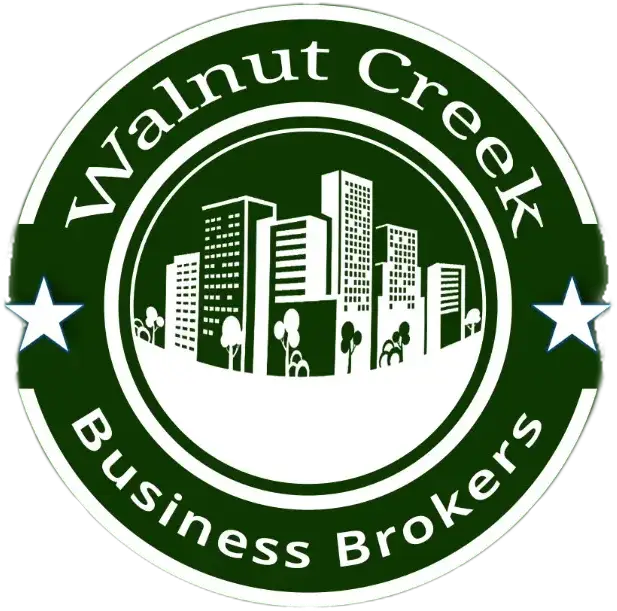Determining the market value of a business is a fundamental step for entrepreneurs, investors, and financial analysts alike. Whether you are planning to sell your business, seeking investment, or simply aiming to understand its financial health, an accurate valuation is essential. It provides a clear picture of the business’s worth, guiding strategic decisions and ensuring informed negotiations. However, calculating this value can be complex, as it involves numerous factors, including financial performance, market conditions, and industry trends.
Various methods have been developed to tackle this complexity, each with its own set of advantages and applications. From asset-based approaches to sophisticated income capitalization models, these methods offer diverse perspectives on a business’s worth. This article explores seven reliable techniques to calculate business market value, providing insights into their methodologies and practical applications. By understanding and leveraging these methods, business owners and investors can make more accurate, data-driven decisions.
1. Asset-Based Valuation
Asset-based valuation is a straightforward method that calculates a business’s market value based on the value of its assets. This approach involves adding up all the assets of the business, both tangible and intangible, and then subtracting any liabilities. The result is the net asset value, which reflects the book value of the company. This method is particularly useful for companies with significant physical assets, such as manufacturing firms or real estate businesses. It provides a clear snapshot of what the business owns and owes at a specific point in time, making it a reliable metric for evaluating the baseline value of the company.
There are two main types of asset-based valuation: book value and liquidation value. Book value uses the values of assets and liabilities as recorded on the company’s balance sheet, which may not reflect current market values due to depreciation or appreciation. Liquidation value, on the other hand, estimates the amount that could be realized if the business’s assets were sold off quickly, typically at a discount to their market value. This method is often used in distressed situations or when a business is facing bankruptcy. While asset-based valuation provides a solid foundation, it may not capture the full potential of a business, especially for companies with significant intangible assets or strong future earnings prospects.
2. Earnings Multiplier Method
The Earnings Multiplier Method is a widely used approach to business valuation that focuses on the company’s ability to generate profits. This method involves applying a multiplier to the business’s earnings, typically using metrics such as net profit, EBITDA (Earnings Before Interest, Taxes, Depreciation, and Amortization), or EBIT (Earnings Before Interest and Taxes). The multiplier is derived from industry standards, market conditions, and the company’s growth potential. By multiplying the business’s earnings by this factor, the method provides an estimate of the market value that reflects both current profitability and future growth prospects.
This method is particularly advantageous because it considers the profitability and operational efficiency of the business, making it relevant for companies with stable and predictable earnings. However, selecting the appropriate multiplier is crucial and can vary significantly based on the industry and the company’s specific circumstances. For example, high-growth tech companies might have higher multipliers compared to established manufacturing firms. While the Earnings Multiplier Method offers a practical and relatively straightforward valuation, it may not fully account for market volatility or the value of intangible assets, such as brand reputation and intellectual property, which can be significant drivers of value in certain businesses.
3. Discounted Cash Flow (DCF) Analysis
Discounted Cash Flow (DCF) Analysis is a comprehensive and widely respected method for calculating a business’s market value by estimating the present value of its future cash flows. This method involves projecting the company’s expected cash flows over a specific period, usually five to ten years, and then discounting these cash flows back to their present value using a discount rate, which typically reflects the company’s weighted average cost of capital (WACC). The sum of these discounted cash flows, along with the terminal value (the value of the business at the end of the projection period), provides an estimate of the business’s intrinsic value.
DCF analysis is particularly powerful because it considers both the time value of money and the specific risks associated with the business’s future cash flows. This makes it a highly detailed and forward-looking valuation approach, suitable for businesses with predictable and stable cash flows. However, DCF analysis requires accurate and realistic projections of future cash flows and an appropriate discount rate, which can be challenging to determine. Misestimations in these inputs can significantly affect the valuation outcome. Despite these challenges, DCF remains a fundamental tool in financial analysis, providing deep insights into a company’s potential future performance and value.
4. Market Value Approach
The Market Value Approach, also known as the Comparable Market Analysis (CMA), is a valuation method that determines a business’s market value by comparing it to similar companies that have recently been sold or are publicly traded. This method relies on the principle of substitution, which assumes that an informed buyer would not pay more for a business than the cost of acquiring a similar one with comparable utility. By examining the valuation multiples, such as Price-to-Earnings (P/E), Price-to-Sales (P/S), or Enterprise Value-to-EBITDA (EV/EBITDA), of these comparable businesses, the market value of the target company can be inferred.
This approach is particularly useful in industries with many comparable transactions, providing a market-based perspective on value. It is straightforward and relies on real market data, making it relatively easy to understand and apply. However, the accuracy of the Market Value Approach depends heavily on the availability and quality of comparable data. Differences in size, market position, and financial health between the target company and its comparables can affect the reliability of the valuation. Additionally, market conditions at the time of the comparable transactions can influence the derived value, necessitating adjustments for any significant changes in the economic or industry environment.

5. Comparable Company Analysis (CCA)
Comparable Company Analysis (CCA) is a method that values a business by comparing it to similar publicly traded companies. This approach involves selecting a peer group of companies that operate in the same industry, have similar business models, and are of comparable size. By analyzing financial metrics and valuation multiples such as Price-to-Earnings (P/E), Price-to-Sales (P/S), and Enterprise Value-to-EBITDA (EV/EBITDA) of these companies, CCA helps estimate the relative value of the target business. This method leverages market data to provide a benchmark, offering insights into how the market values similar firms.
CCA is particularly advantageous because it provides a real-time market perspective, reflecting current investor sentiment and market conditions. It is relatively straightforward to perform if there is a sufficient number of comparable companies, making it a popular choice among investors and analysts. However, the accuracy of CCA depends heavily on the quality and availability of the comparable companies’ data. Differences in growth prospects, operational scale, and market positioning between the target business and its peers can lead to valuation discrepancies. Additionally, market volatility and unique company-specific factors may not be fully captured, necessitating careful selection and adjustment of comparables to ensure a fair and accurate valuation.
6. Precedent Transactions Analysis
Precedent Transactions Analysis, also known as Comparable Transactions Analysis, is a valuation method that assesses a business’s market value by examining the sale prices of similar companies in past transactions. This method involves identifying recent acquisitions or mergers in the same industry, with comparable size and financial characteristics to the target business. By analyzing the transaction multiples, such as Price-to-Earnings (P/E), Price-to-Sales (P/S), and Enterprise Value-to-EBITDA (EV/EBITDA), used in these deals, this approach provides a benchmark to value the target company.
This method is particularly useful for providing context on how much acquirers have been willing to pay for similar businesses under similar conditions. It reflects real-world deal-making scenarios and incorporates a premium for control, often seen in acquisitions, which can provide a more realistic estimate of market value. However, the accuracy of Precedent Transactions Analysis is contingent on the availability and relevancy of past transactions. Market conditions, economic environments, and specific deal terms at the time of those transactions can significantly influence the multiples. Therefore, it is crucial to adjust for any differences in timing, market trends, and unique business attributes to ensure an accurate and relevant valuation.
7. Income Capitalization
Income Capitalization is a valuation method that determines a business’s market value based on its ability to generate income. This approach involves calculating the value of a business by dividing its expected net operating income (NOI) by a capitalization rate (cap rate), which represents the required rate of return on investment for investors. The formula used is Value = NOI / Cap Rate. This method is particularly common in valuing real estate and other income-producing assets where the income stream can be reliably predicted.
The strength of the Income Capitalization approach lies in its focus on the income-generating potential of a business, making it particularly suitable for businesses with stable and predictable income streams. It provides a straightforward measure of value based on the profitability and risk profile of the business. However, accurately determining the appropriate cap rate is critical, as it reflects the risk and expected return specific to the business and its industry. Factors such as economic conditions, market volatility, and the business’s operational efficiency can significantly impact the cap rate and, consequently, the valuation. Therefore, a thorough understanding of the market and careful analysis of comparable businesses are essential for applying this method effectively.
Final Thoughts
Accurately calculating the market value of a business is crucial for informed decision-making, whether for selling the business, attracting investors, or strategic planning. Each valuation method offers unique insights and has its own set of advantages and limitations. Asset-based valuation provides a snapshot of the business’s tangible worth, while the Earnings Multiplier Method highlights its profitability potential. Discounted Cash Flow Analysis offers a forward-looking perspective by projecting future cash flows, and the Market Value Approach reflects current market conditions through comparables.
Comparable Company Analysis and Precedent Transactions Analysis both rely on market data to benchmark value, each providing a market-based perspective that can be highly relevant in dynamic industries. The Income Capitalization method focuses on the income-generating ability of a business, making it suitable for entities with stable earnings. Combining these methods can often yield the most accurate and comprehensive valuation, as it allows for cross-verification and a more nuanced understanding of the business’s worth. Engaging with financial professionals and valuation experts can further enhance the accuracy and reliability of the valuation, ensuring well-informed strategic decisions.
Understand Your Business Market Value – Contact Walnut Creek Business Brokers Today!
Trust Walnut Creek Business Brokers to provide you with a comprehensive understanding of your business’s market value. Our team combines expertise, local knowledge, and strategic marketing efforts to ensure your business gets the attention it deserves. We offer detailed business valuations to help you grasp the true market value of your business. Our targeted marketing strategies are designed to reach the right buyers and generate high-quality leads.
Our experienced brokers handle all negotiations, ensuring you get the best deal possible. We manage every step of the process, making your business sale as stress-free as possible. Contact Walnut Creek Business Brokers today for a personalized consultation and let us help you achieve your business selling goals with confidence and ease.


